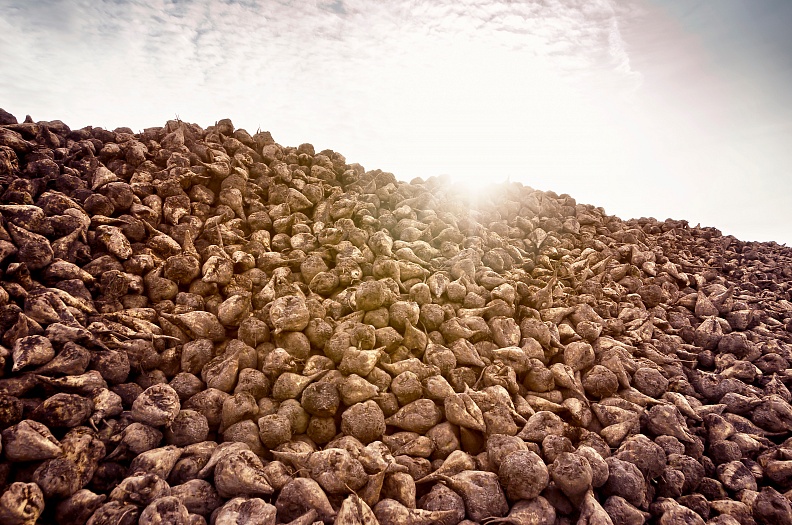3 factors to maximize sugar beet yield
08.04.2022 | Beets
Once again we remind you of our favorite axiom: successful storage begins in the field! So if you want the crop to stay in the vegetable storehouse for a long time without loss, you need to take care of this at every stage of beet production.
After five years of observing more than 150 fields, the Beet Yield Challenge identified 3 important factors that growers can focus on to close the 10-25% gap between actual and potential sugar beet yields.
The main benefit of BYC is the conclusions that can be drawn from the detailed evaluation and how it can help growers improve agronomy and increase yields.

3 key areas for sugar beet growers to focus on
- Achieving target plant abundance - Proper management of seedbed treatments and flexibility in approach;
- Improving soil health and resistance to stresses such as soil damage, disease and drought - incorporating organic additives into the system;
- Maintaining crop health in the fall - actively managing crops for later harvest, including variety selection and disease control.
1. Achieving target plant abundance
Although the average plant abundance at BYC in most seasons was close to the target of 100,000 plants/ha, there were big differences.
As early as the first year of BYC, in 2017, it was clear that low plant abundance was leading to lower yield potential, not due to uniform low plant abundance, but due to scattered fields. Low plant abundance in isolated areas of a field consistently reduces potential yields by about 10-15%.
Low and variable plant abundance was another factor contributing to the low yield in the difficult 2020 season, which was severely affected by jaundice virus and cercosporosis.
A very dry spring made it difficult to prepare good seed beds for rapid germination and crop development, resulting in uneven seeding and the lowest average plant density of 89,000 plants/ha. This also contributed to the spread of jaundice virus, as uneven crops tend to be more attractive to aphids because of the greater color contrast between crops and soil.
These observations indicate that growers should take another look at seedbed preparation. Proper population formation comes down to managing the treatment of beds, particularly growing in the right conditions, rather than sowing by date.
For example, during dry periods, it's best to think about a minimum number of passes, so instead of dragging the cultivator three times, it's better to harrow once. Look at the season, the weather, and be flexible. The difference between producers with good plant populations and others is the willingness to adapt to the season.

2. Building resilience to drought
Over the past five years, growers have lost about 10% of their yield potential due to summer drought, with higher losses in years when drought was a bigger factor (these are 2018 and 2020).
The yield model does not account for virus or cercospora infestation levels-it assumes a healthy growing crop cover, but even so, in 2020 it predicted a 20% reduction in yields just because of drier summer weather. Low yields weren't just due to disease.
Over the years, a pattern began to emerge that crops grown in fields with more stable soils did better in the summer drought. A broader link between improved soil health and susceptibility to other stresses - such as soil compaction and subsidence after heavy rain, as well as diseases and viruses - also became apparent.
Clearly, improving soil stability by applying organic fertilizers and growing cover crops in a crop rotation helps beets cope more effectively with and recover from summer droughts. Fields that have used these practices in the past are more resilient and reach their potential.
3. Keeping the crop healthy in the fall
The ability of sugar beets to recover from summer drought and continue to increase yields in the fall was also noted by BYC as both early and late crops were taken for comparison. This is a case of planning for a late harvest rather than just harvesting late.
With poor fall care, you can lose about 10-20% of your harvest potential. Solving the problem starts with the choice of varieties.
Regular fungicide protection will also help, but you need to change your mindset: don't just spray in July and maybe one more when the harvest is over. You have to weigh the risks and may have to consider a third spray if the risk is high. Attention to detail is the main common denominator for achieving greater crop yield potential.
Over five years, a number of growers have consistently achieved a higher share of potential yields than others. Managing agronomic details, especially these three factors, to achieve the best performance takes time, but BYC clearly proves it's worth it.
Do you need a vegetable storage facility? Or are you looking for equipment for long term storage of beets? Our experts will answer all your questions at +74952293903 or email info@agrovent.com!

